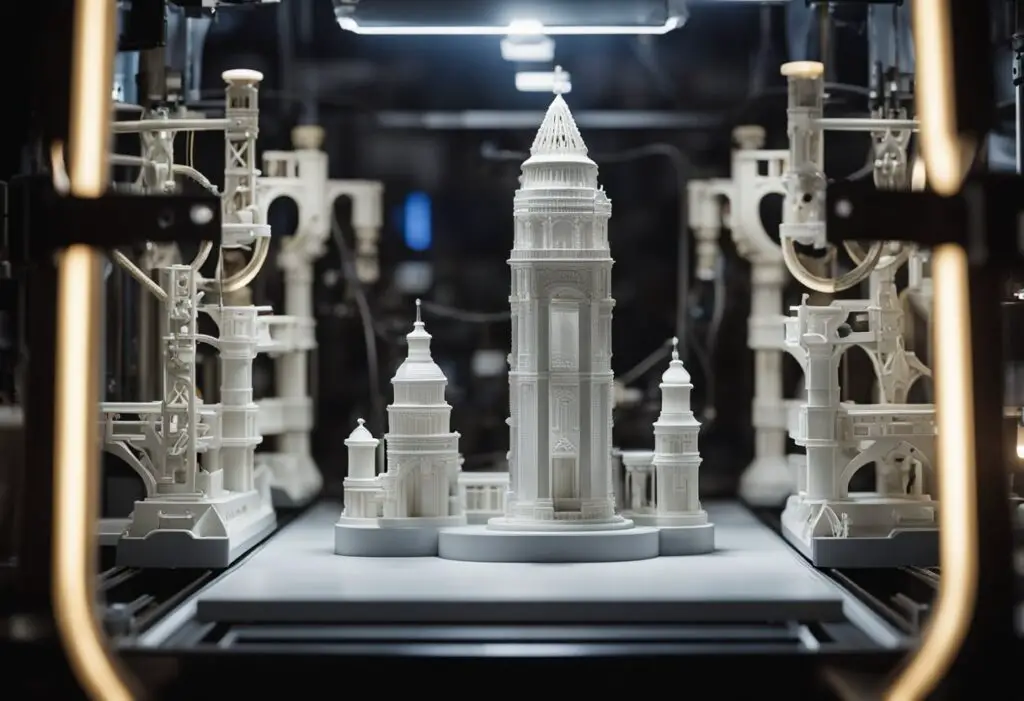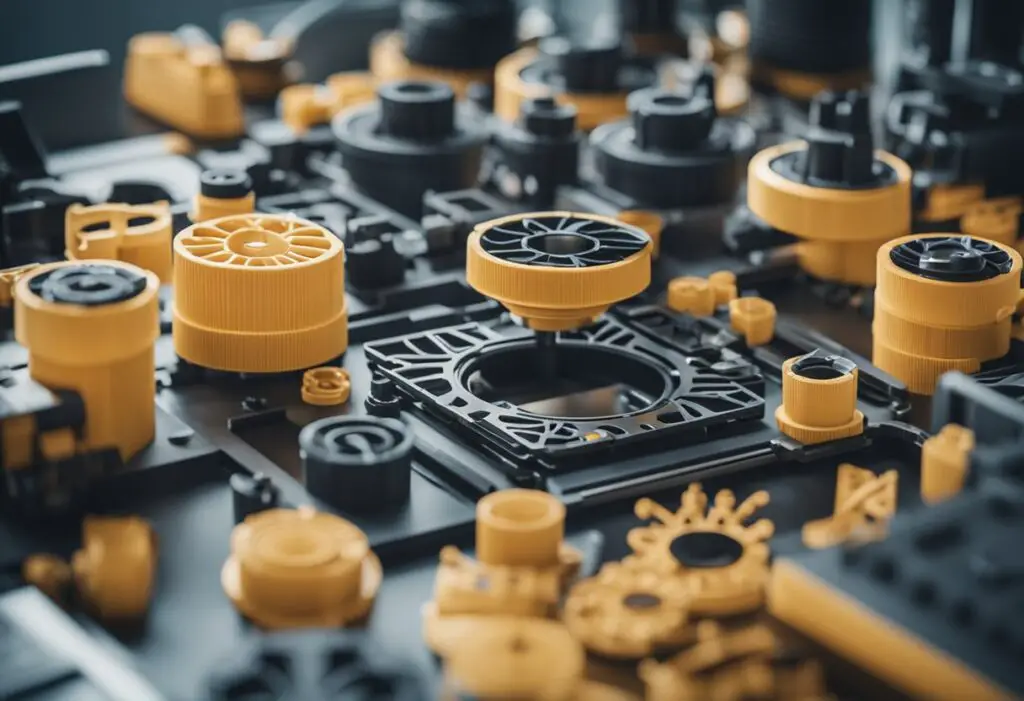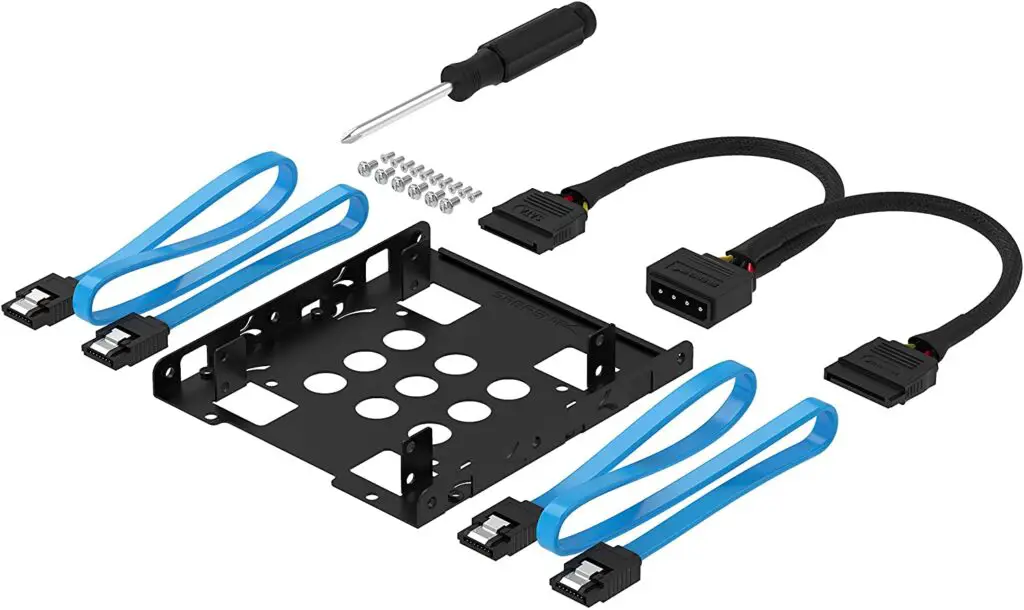3D printing, also known as additive manufacturing, has made significant strides in various industries, including art preservation.
This advanced technology allows for the creation of three-dimensional objects by layering materials based on digital models, opening up a world of possibilities for museums and other institutions.
Table of Contents

Art preservationists now have innovative new methods to safeguard valuable artifacts and cultural heritage.
By utilizing 3D printing, they can create accurate replicas and interactive displays, allowing the public to understand and appreciate these masterpieces while ensuring the original art remains protected.
Moreover, 3D printing has revolutionized how art is conserved and restored, enabling the creation of bespoke tools and materials customized to the artwork’s specific needs.
The merging of this technology with traditional preservation methods has greatly enhanced the field and ensured the continued appreciation of our cultural legacy for generations to come.
Examples of How 3D Printing has Advanced Society in Art Preservation
3D printing technology has opened new possibilities in art preservation, enabling the restoration and recreation of damaged or destroyed masterpieces.
By scanning the original artwork and using 3D printing materials, it is possible to produce highly detailed replicas, ensuring that future generations can continue to appreciate these valuable pieces.
An inspiring example is the restoration of two ancient busts from Syria’s Palmyra region, which were severely damaged by ISIS in 2015.
Thanks to 3D printing technology, the busts were repaired in Italy and successfully returned to Syria in 2017.
This demonstrates the potential of 3D printing to preserve not only art but also cultural heritage in the face of threats and destruction.
In addition to restoring damaged artworks, 3D printing can create true-to-life replicas with impressive detail.
This allows art enthusiasts to interact with the artwork in ways that were not possible before.
For instance, they can rotate, zoom, and view the artwork from various angles, giving them a deeper understanding and appreciation of the artist’s vision.
A perfect example is the 3D printed Winged Skull sculpture by Joshua Harker made using a nylon-glass compound, showcasing the incredible precision and detail achievable through 3D printing.
Moreover, some scientists and artists have collaborated to research the best preservation methods for modern art using 3D printing.
In a groundbreaking experiment, an artwork was specifically produced to be preserved using 3D printing technology, leading to a better understanding of how to maintain and protect masterpieces for the enjoyment of future generations.
These examples illustrate the diverse ways in which 3D printing is revolutionizing art preservation, making it possible to protect, restore, and replicate valuable artworks for years to come while also allowing for increased engagement with the pieces.
Emergence and Evolution of 3D Printing in Art Preservation
History of 3D Printing in Art Conservation
3D printing, initially developed for industrial applications, has expanded its reach into various industries, including art preservation.
The use of 3D printing in art conservation has grown with the advancement of digital technologies.
By layering materials based on digital models, 3D printing enables the creation of three-dimensional objects with complex geometries that were previously impossible to replicate.
This has allowed for better observation, analysis, and reconstruction of historical and traditional art pieces.
Revival of Traditional Art
Digital technologies and 3D printing have opened up new possibilities for the restoration and preservation of traditional art forms.
High-resolution 3D scanning enables an accurate and detailed reproduction of original artworks.
3D printing has gained a unique role in the technological development of art restoration, making it possible to reproduce intricately detailed sculptures and objects that were once difficult to recreate using traditional methods.
The use of 3D printing in the art and heritage preservation field has allowed for better research, documentation, and accessibility in an all-inclusive way.
Transformation of Contemporary Art
As 3D printing technologies continue to advance, contemporary artists have embraced this innovative medium, transforming the way art is conceptualized and created.
Artists such as Neri Oxman and Amy Karle are exploring the fusion of technology and human experience in their work.
These emerging artists use additive manufacturing techniques to develop unique pieces, pushing the boundaries of artistic expression.
In conclusion, the emergence and evolution of 3D printing in art preservation have contributed significantly to the revival and transformation of both traditional and contemporary art forms.
By utilizing digital technologies and 3D printing techniques, artists and conservationists can now restore, preserve, and create works of art in ways that were once unimaginable.
Technical Aspects of 3D Printing in Art Restoration
The Workflow
The process of art restoration using 3D printing typically involves a series of steps. First, a 3D scanner captures the object’s surface geometry, generating a digital model.
This detailed model can be manipulated using computer-aided design (CAD) software to evaluate and plan the restoration work.
The final step involves actual 3D printing, where an object is built layer by layer from materials such as plastic, resin, metal, or even ceramics to recreate the missing or damaged parts of the artwork.
In-depth of 3D Scanning and Printing
3D scanning technology has improved significantly over the years, allowing for more precise and accurate digital models.
Art restorers often use rapid prototyping methods like stereolithography (SLA) or selective laser sintering (SLS) to create high-resolution replicas of the original artifacts.
The 3D scanner captures every detail of the object, providing an accurate reference for printing.
The 3D printers then use this information to create new layers, building the restored artifact from the ground up.
Material Consideration
The choice of materials is crucial in the restoration of historical art pieces.
When using 3D printing for art preservation, it is essential to select materials that closely resemble the original materials used in the artwork.
Modern 3D printers can use various materials, from thermoplastics and resins to metals and ceramics.
This versatility allows restorers to choose the most suitable material for a specific project, ensuring the final result is as close to the original as possible.
Furthermore, the rapid prototyping techniques employed by 3D printers ensure prototypes can be developed quickly, allowing for any necessary adjustments to be made before the final print.
Impact of 3D Printing on Museum Experience
Preserving and Replicating Artifacts
3D printing has revolutionized the way museums preserve and replicate artifacts.
This technology enables the creation of highly accurate replicas, allowing the general public to get closer to cultural heritage than ever before.
By digitizing and 3D printing these artifacts, museums can better protect delicate originals while still providing visitors with engaging haptic experiences.
Moreover, 3D printing has great potential for archaeology and heritage preservation, as it can help reconstruct and study lost or damaged objects in a non-invasive way.
Artifacts Restoration
3D printing has also proven useful in the field of artifact restoration.
For instance, the technology can be used to physically reconstruct parts or entire artworks for restoration purposes.
As a result, 3D printing can not only help restore damaged or missing elements on sculptures and other pieces but also contribute to a more authentic and immersive museum experience.
Additionally, 3D scanners play a significant role in the restoration process, enabling restorers to accurately capture the geometry and dimensions of an artifact’s original state.
This approach ensures a high level of precision and reliability during the restoration process, ultimately benefiting art enthusiasts and preserving cultural heritage for future generations.
The Future of 3D Printing in Art Preservation
As 3D printing technology continues to advance, it brings promising opportunities for sustaining and preserving the heritage of artworks.
Various applications of 3D printing have emerged in art preservation, ranging from replicating delicate artifacts to recreating lost or damaged masterpieces.
One potential application of 3D printing is in the area of health and conservation of artworks.
By creating precise replicas of endangered sculptures or delicate relics it allows conservators to examine and learn about them using digital tools, avoiding potential risks associated with handling the original objects.
This additive manufacturing process has significantly improved the accuracy and efficiency of art restoration.
3D printing also allows artists and educators to experiment, learn, and share their knowledge about the artistic methods of the past.
With photogrammetry, a technique used for capturing the 3D shape and texture of physical objects, digital models can be constructed and then 3D printed, creating a tactile and engaging learning experience for students and researchers.
Furthermore, 3D printing can contribute to the sustainable preservation of cultural heritage by providing an eco-friendly and efficient method of reproduction.
As technology advances, additive manufacturing is bound to become even more sustainable, providing new possibilities for conserving and replicating historical artifacts.
This development opens doors for innovative exhibition spaces and immersive experiences to share the beauty and history of these crafts with a broader audience, ensuring that they will be appreciated for generations to come.
To sum up, the future of 3D printing in art preservation looks promising.
Its diverse applications, from health and conservation to education and exhibition design, offer new opportunities for artists, professionals, and enthusiasts alike.
This technological revolution continues to reshape our understanding and appreciation of art, making the future of art preservation exciting and full of potential.
Case Studies of 3D Printing in Art Preservation

3D printing has demonstrated its potential in various fields, and art preservation is no exception.
Several institutions and initiatives have adopted this technology to preserve, restore, and replicate different forms of art and cultural heritage.
Let’s take a look at some of these remarkable case studies.
The UCL Institute for Sustainable Heritage has been actively researching and promoting sustainable solutions for conserving cultural heritage.
One of their notable projects is Nanorestart, which is funded by the EU Horizon 2020 program.
This project focuses on developing nanomaterials and innovative techniques to preserve and restore modern and contemporary art.
3D printing plays an essential role in creating replicas for public display, ensuring valuable artworks remain protected while increasing their accessibility.
In the field of art conservation, Carolien Coon, a Ph.D. candidate at the UCL Institute for Sustainable Heritage, has worked extensively on preserving plastic materials found in modern and contemporary art.
3D printing serves as a valuable tool in Carolien’s work, helping her create accurate replicas and research models to study the effects of degradation and analyze conservation treatments.
The Victoria and Albert Museum (V&A) in London is another institution that has embraced 3D printing technology for art preservation.
In collaboration with the Design with Heritage project, the V&A has been using 3D printing to restore and recreate damaged artifacts.
This innovative approach allows conservators to replace missing or broken elements with precision, ensuring the integrity of the original artwork.
Tom Lomax, a renowned British artist who worked closely with the V&A, has also implemented 3D printing in his art conservation practices.
His passion for heritage science and experimentation with new materials and techniques has resulted in several projects that harness 3D printing technology for conserving and replicating art pieces.
Finally, the Smithsonian Institution, one of the world’s largest museum and research complexes, is also a proponent of 3D printing for art preservation.
Their Cooper Hewitt Smithsonian Design Museum has been instrumental in using 3D scanning and printing methods to produce accurate replicas of artifacts in their collection, enhancing both research and public engagement.
These case studies highlight the remarkable ways in which 3D printing has advanced the field of art preservation, offering new possibilities for conserving cultural heritage while increasing accessibility for wider audiences.




